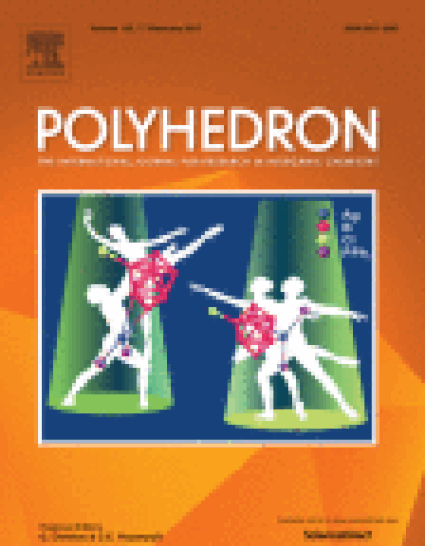
Article
Di- and trivalent iron complexes with redox-active 1-(2-pyridylazo)-2-phenanthrol (papl)
Polyhedron
(2017)
Abstract
The synthesis and study of redox-active ligand complexes has received much recent attention. We have recently explored the coordination chemistry of arylazo redox-active ligand 1-(2-pyridylazo)-2-phenanthrol (papl) and herein expand the series of complexes to the Group 8 transition metal ion, iron. We report the preparation and structure of a divalent iron complex with the papl anion, Fe(papl)2, which is diamagnetic and features ligand centered redox activity and intense visible electronic transitions. Three polymorphs of the Fe(papl)2 complex are reported, including one that exhibits a structural phase transition at low temperature. Oxidation of Fe(papl)2 with molecular iodine has produced the low-spin trivalent complex [Fe3+(papl)2]+ as an ionic complex with the I3 anion. Density functional theory (dft) calculations and data from variable temperature Mössbauer spectroscopy experiments are provided to shed light on the electronic structures of these iron complexes.
Keywords
- Iron complexes,
- Redox active ligands,
- Mössbauer spectroscopy,
- X-ray crystallography,
- Density functional theory
Disciplines
Publication Date
February 1, 2017
DOI
10.1016/j.poly.2016.11.044
Publisher Statement
© 2016 Elsevier Ltd. All rights reserved.
Citation Information
Robin A. Taylor, Robin A. Taylor, Alan J. Lough, Takele Seda, et al.. "Di- and trivalent iron complexes with redox-active 1-(2-pyridylazo)-2-phenanthrol (papl)" Polyhedron Vol. 123 (2017) p. 462 - 469 Available at: http://works.bepress.com/takele-seda/17/
